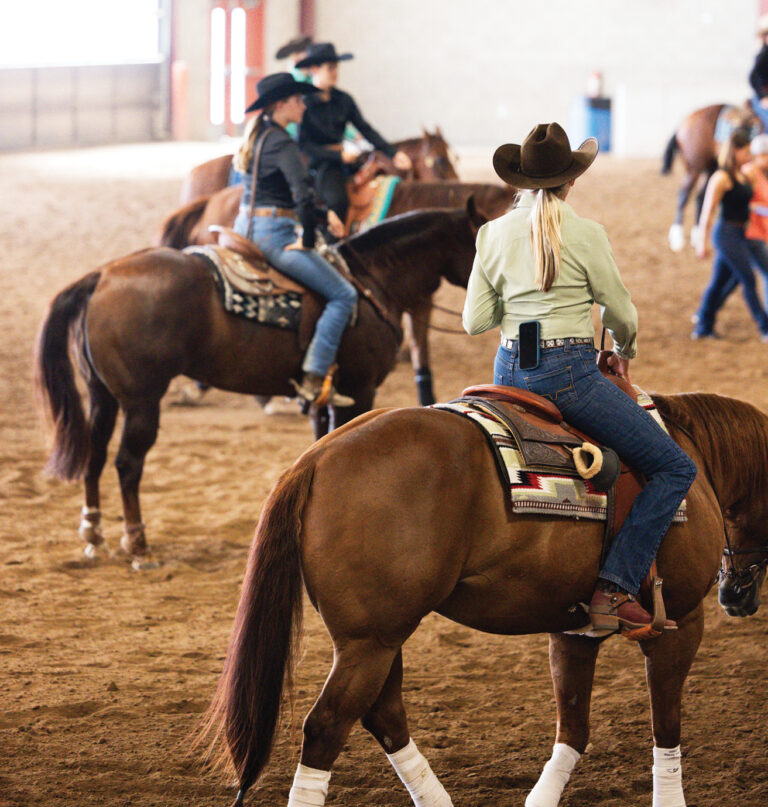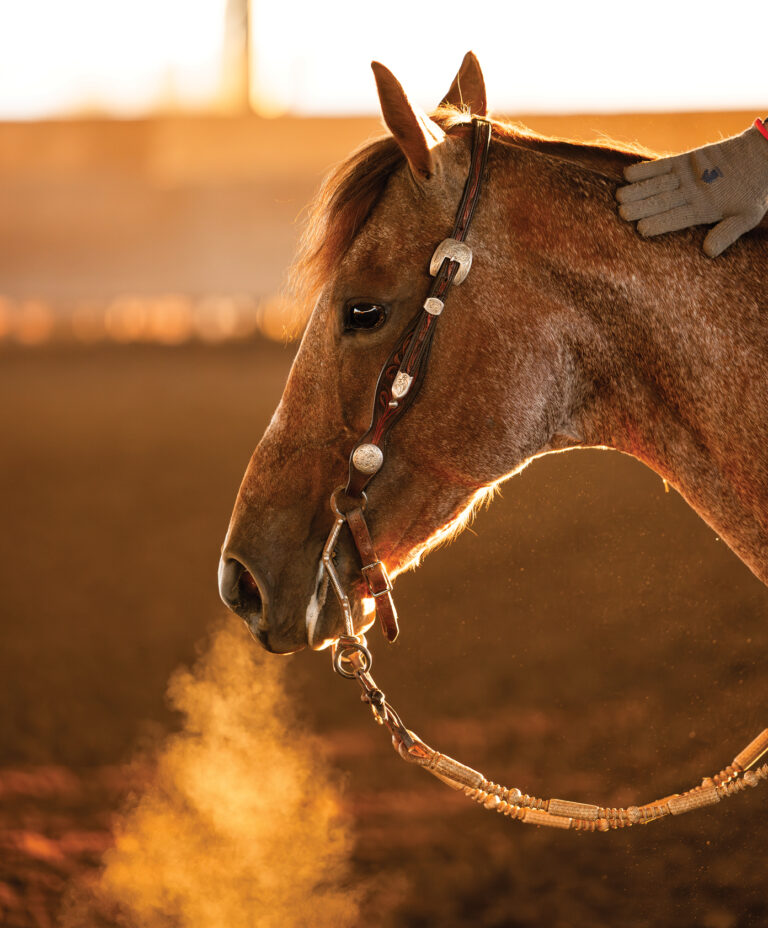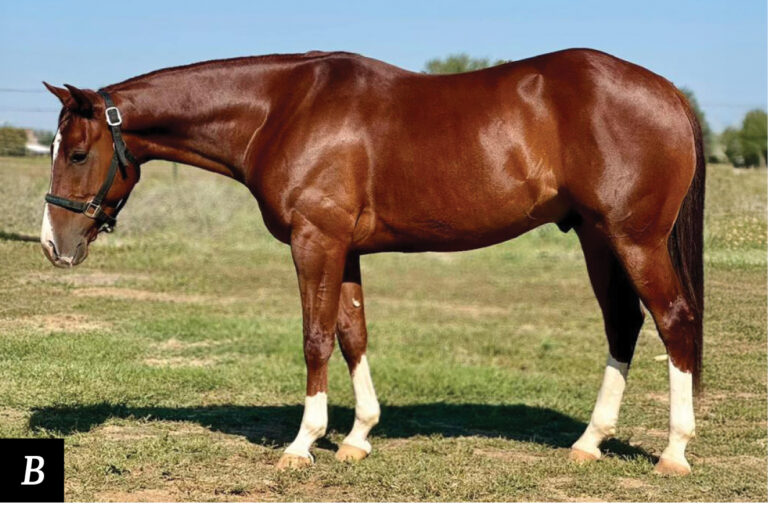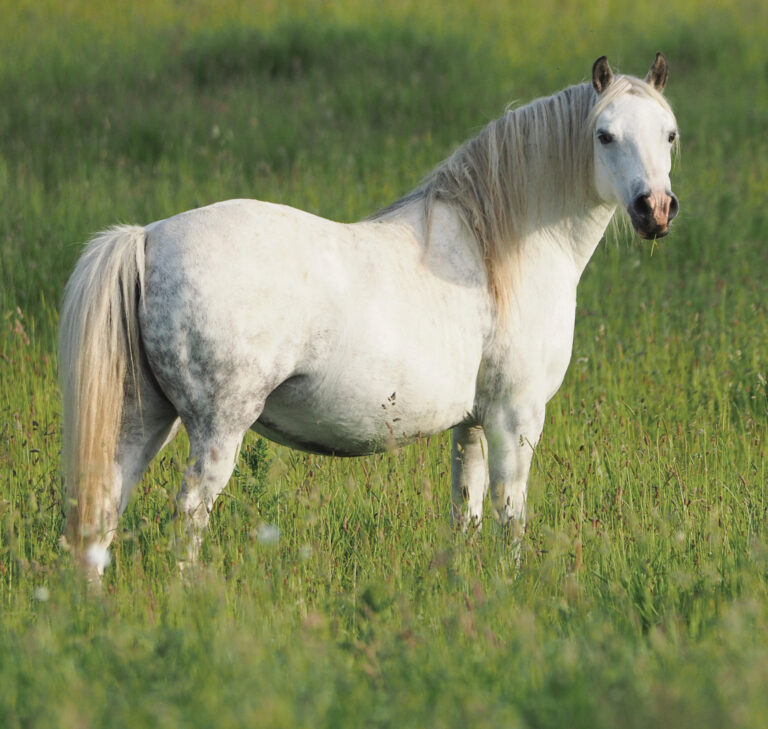Q I show my 9-year-old Appaloosa gelding in all-around competition on the regional level and enjoy trail riding with him. Due to a hind-leg injury, he’s been laid up for almost a month. My vet advised one to two more months of stall-rest. Once he’s fully healed, how can I quickly recondition him without risking re-injury? Is there anything I can do while he’s laid up to make his transition back to work easier?

BETSY JAMES, North Carolina
A Following a long layoff, it’s crucial that you bring your horse back to work slowly. After not exercising for an extended period of time, your horse will be out of shape. To prevent re-injury, you must rebuild your gelding’s endurance and muscle tone gradually.
The good news is that most horses that suffer an injury and go through a layup can get back to their regular riding routine and athletic ability—as long as you take the time to slowly and gradually work through the reconditioning process. I’ll provide you with some guidelines and tips for success to safely get your horse back into competition shape after he’s fully recovered, and I’ll offer some suggestions about what you can do while he’s laid up to make his reconditioning period easier for both of you.
Reconditioning Prep
• Precisely follow your vet’s instructions. If she advises six more weeks of stall rest, then stick to those six weeks—not five weeks and six days. Your vet is the expert and advised stall rest for a good reason.
• Watch his weight. Depending on your vet’s advice, consider reducing your horse’s grain and possibly his hay to prevent weight gain. While laid up, he’s inherently going to lose some muscle tone, which will make going back to work challenging for him. If he gains a substantial amount of weight while on stall rest, it’s going to make his recovery even harder.
• Maintain his feet. Even if your horse is on full stall rest, keep him properly shod—if his hooves get too long, it’ll put additional stress on his tendons and ligaments.
• Provide movement. Ask your vet what kind of minimal exercise you can give your gelding while he’s recovering. Depending on the severity of his injury, you might be able to hand-walk him or provide him with some turnout time during his layup. The movement will help keep his muscles limber and increase his circulation—thus promoting healing. Additionally, turnout time will help him get mentally prepared to go back to work. Just as you would if you were cooped up in a small space for an extended period of time, your horse will get bored and a little stir crazy—and is likely to be extremely fresh when you do get back to riding. (Caveat: Be sure to talk to your vet before turning your horse out to pasture. You don’t want to give him too much liberty and risk further injury; sometimes, the better option for a laid-up horse is to simply provide him with a little more space to move around in, such as a paddock area.)
• Don’t rush. Even if he seems to be progressing quickly, don’t rush. Advance slowly, carefully monitor his progress, and alert your vet right away if anything seems amiss.
Back-to-Work Strategies
Your vet can provide a comprehensive program to get your horse back to work. Here’s an outline of what it’ll likely involve. Without question, do not rush from one stage to the next, and only advance to greater effort with your vet’s guidance.
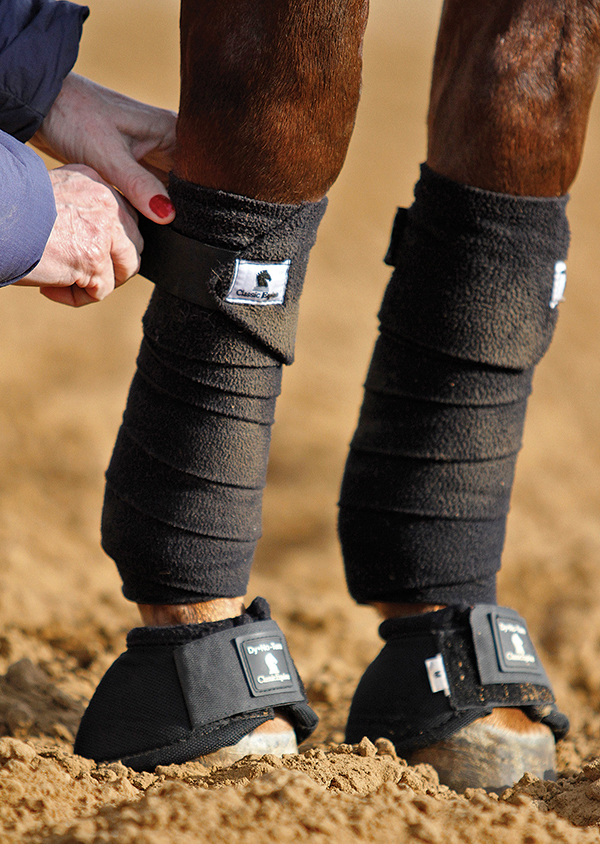
Hand-walking: If your vet has advised you not to hand-walk your gelding during his layup (and/or he’s had little-to-no exercise during his time off), begin his physical reconditioning with 10 to 20 minutes of daily hand-walking. This is the first step in strengthening your horse’s muscles, increasing his flexibility and circulation, and re-acclimating his mind to activity after extended stall rest.
Mounted walking: Begin a routine of 10 to 20 minutes of mounted walking a day—only on straight lines, no tight corners or turns to minimize joint and ligament torque as your horse acclimates to carrying your weight again. Continue this walking regimen, gradually increasing the time of your sessions up to 30 or 45 minutes.
Jogging and long trotting: Progress to short jogging sessions—about 5 to 10 minutes—again, only on straight lines. Give your horse plenty of walking breaks in between trotting stretches. Gradually increase the duration of your jog time over a number of days—maybe even a week or more. Next, proceed to short sessions of long trotting on straight lines. Long trotting will help recondition your horse faster than jogging. It requires your horse to substantially work his hindquarters and stretch his muscles, tendons, and ligaments; plus, it boosts his endurance. Gradually increase the length of your long-trotting sessions over a number of days.
Loping and turning: After several weeks of jogging and long trotting, and after confirming your gelding’s progress with your vet, step the pace up a notch. Begin with short, slow lope sessions in both directions; gradually increase the duration of your lope time over a period of days or weeks, always giving your horse walk breaks in between loping stretches.
Depending on the extent of your horse’s injury and how quickly he progresses in rebuilding his muscle tone and flexibility, he should be ready for some gentle, wide turns after you’ve successfully loped on straight lines for a time. Keep in mind, however, that any degree of turning puts additional stress on a horse’s tendons and ligaments. So, especially when you first reintroduce circles and turns into your horse’s routine, make any direction change very slight and be sure to maintain your position, keeping your center of gravity directly over his, to help him maintain his balance.
What to Avoid
After a long layup, many riders assume that starting their horses on a hotwalker, then progressing to round-pen or longe-line work is the best way to reintroduce exercise. In my experience, vets have almost always advised not to begin a horse’s reconditioning program on a hotwalker or longe line. Both of these methods require a horse to work on a circle, which inevitably puts additional stress on his joints, ligaments, and tendons. Furthermore, and especially on a longe line, if your horse is mentally unprepared for work and overly fresh, there’s a chance he’ll indulge in too much movement—greatly increasing his risk of re-injury.
Carol Metcalf Pilot Point, Texas, has earned numerous AQHA world and reserve world titles in Western pleasure, Western riding, reining, and working cow horse. She was named the 2004 limited open and intermediate open NRHA Futurity champion and was also the 2005 limited open NRCHA reserve champion and the 2007 open bridle NRCHA reserve world champion. Metcalf was named the 2000 AQHA Horsewoman of the Year and the 2013 NRHA Horsewoman of the Year. She coaches youth and amateurs in reining and working cow horse, and owns and operates Metcalf Quarter Horses in Pilot Point, Texas, with her husband, Steven, and son, Carter.
Save

